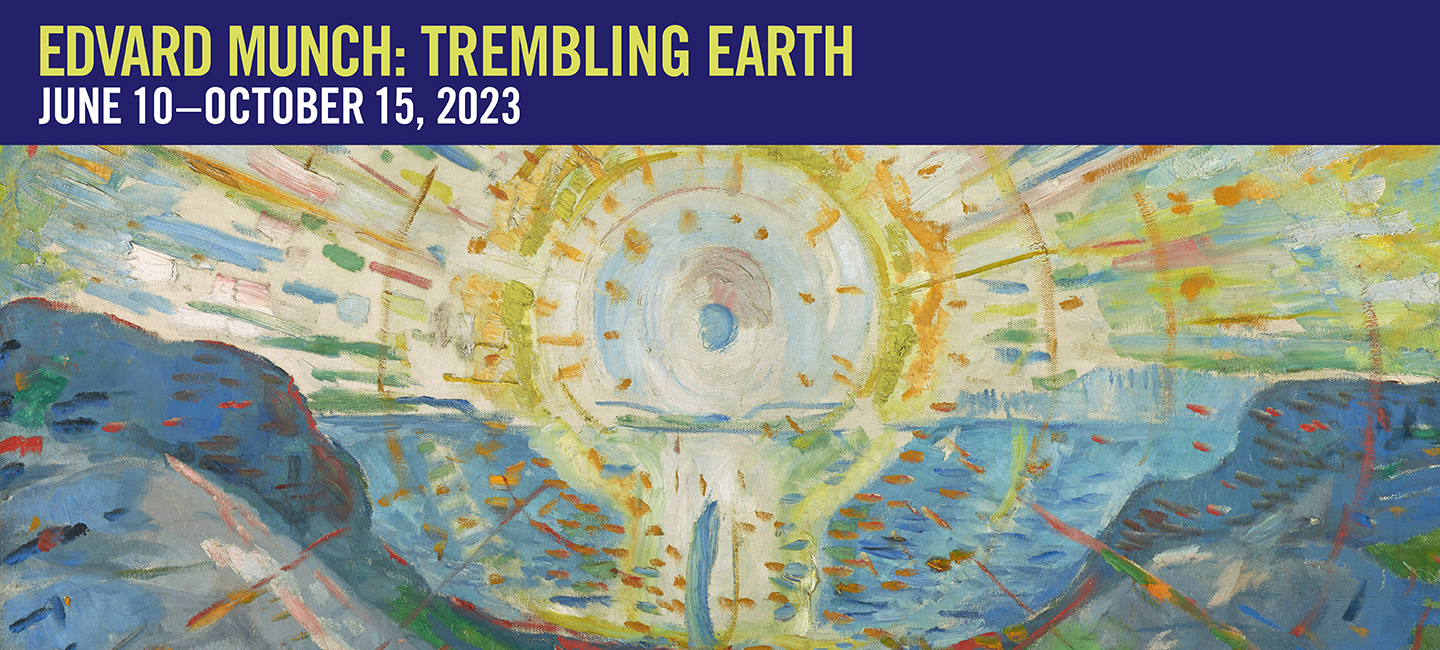
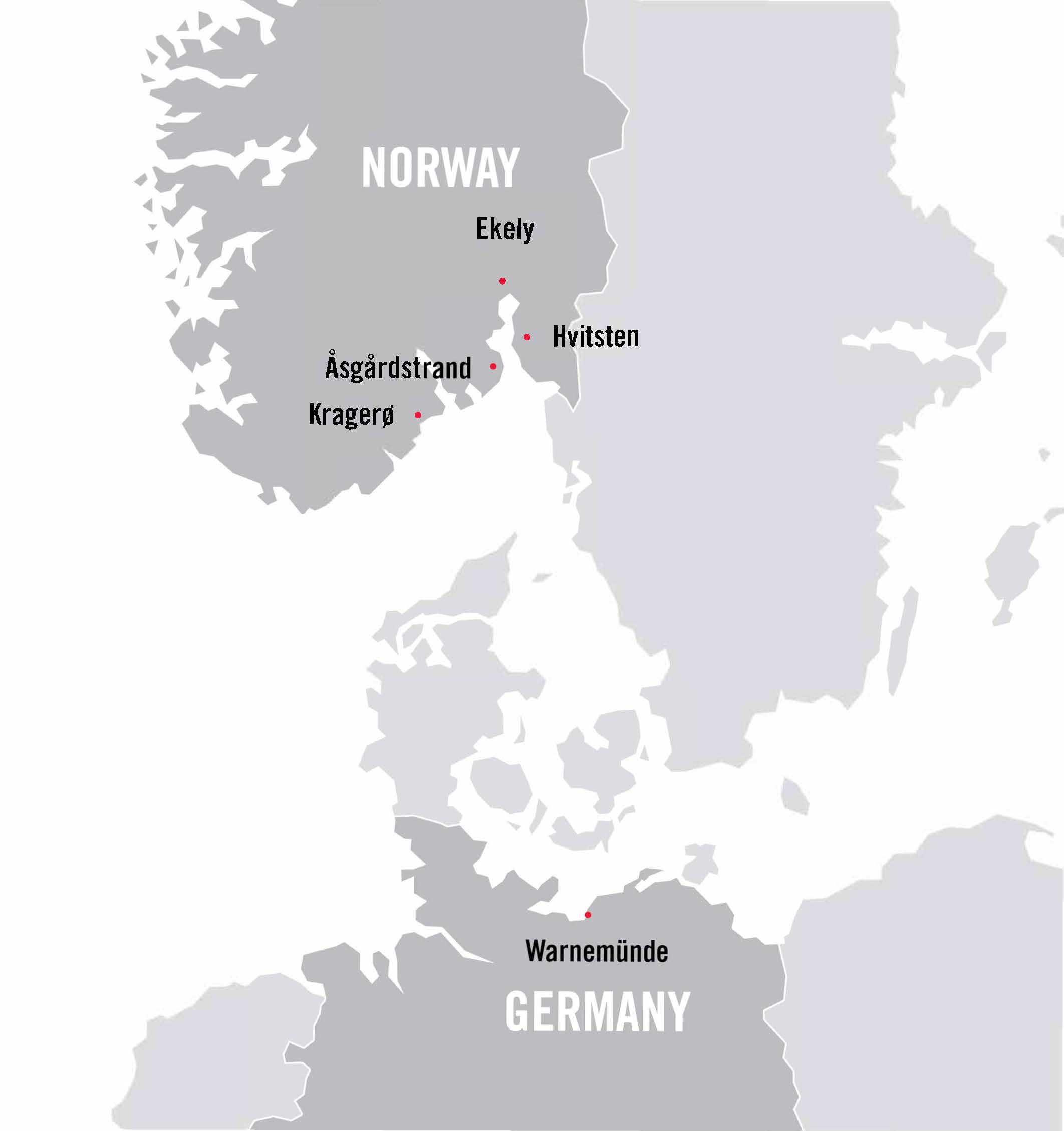
Åsgårdstrand
Girl under Apple Tree
Munch purchased a summer cottage in the coastal village of Åsgårdstrand in 1898. The house, visible in the background of Girl under Apple Tree, is a museum today.
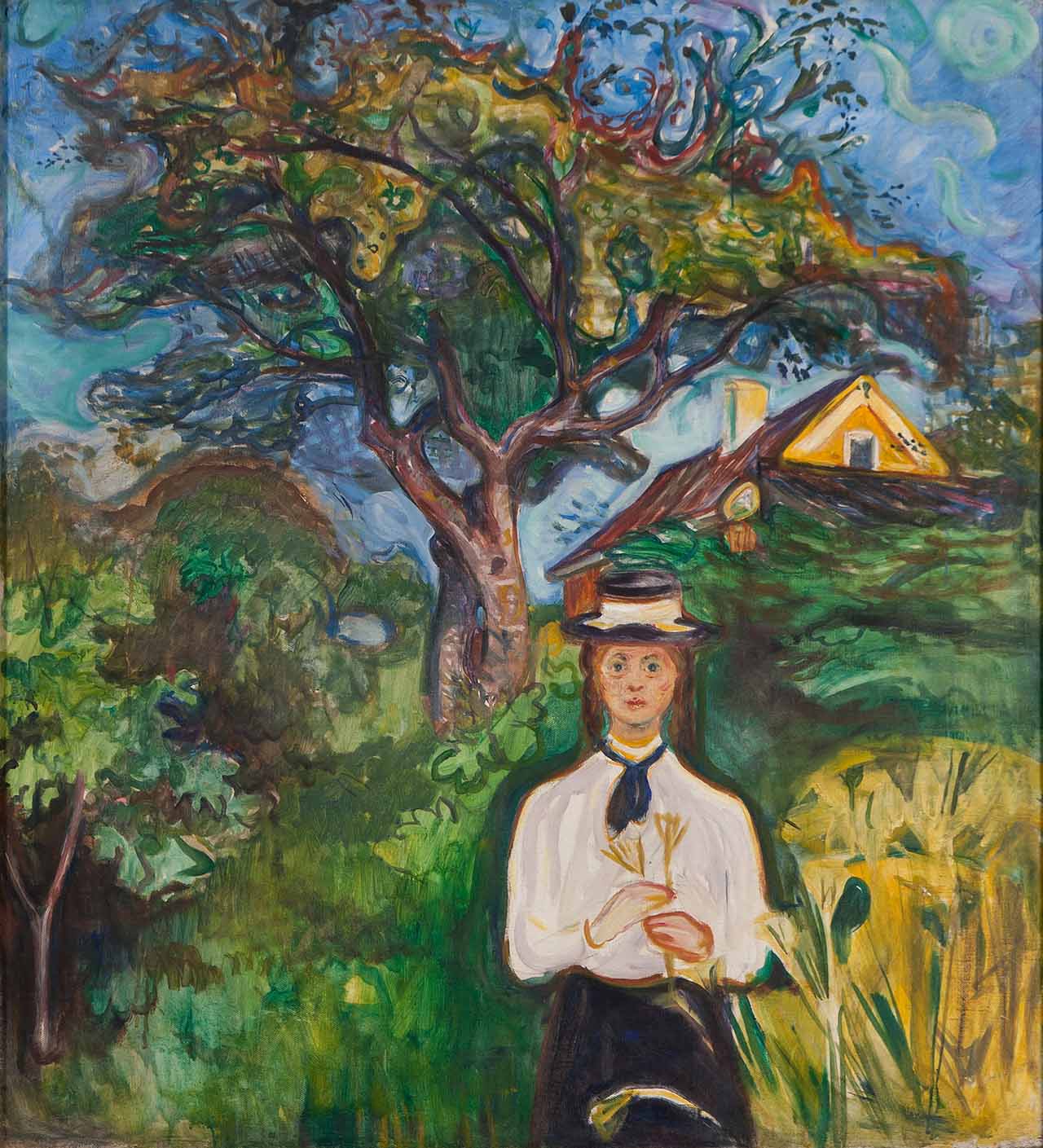 Edvard Munch, Girl Under Apple Tree, 1904, oil on canvas. Carnegie Museum of Art, acquired through the generosity of Mrs. Alan M. Scaife and family, 65.16, © Artists Rights Society (ARS), New York
Edvard Munch, Girl Under Apple Tree, 1904, oil on canvas. Carnegie Museum of Art, acquired through the generosity of Mrs. Alan M. Scaife and family, 65.16, © Artists Rights Society (ARS), New York
The Girls on the Bridge
Munch featured the wooden bridge which served as a dock for ferries traveling to and from the Norwegian capital, Kristiania (Oslo), in his iconic motif Girls on the Bridge. The village of Åsgårdstrand, including the grand Kiøsterud Manor, are visible in the background.
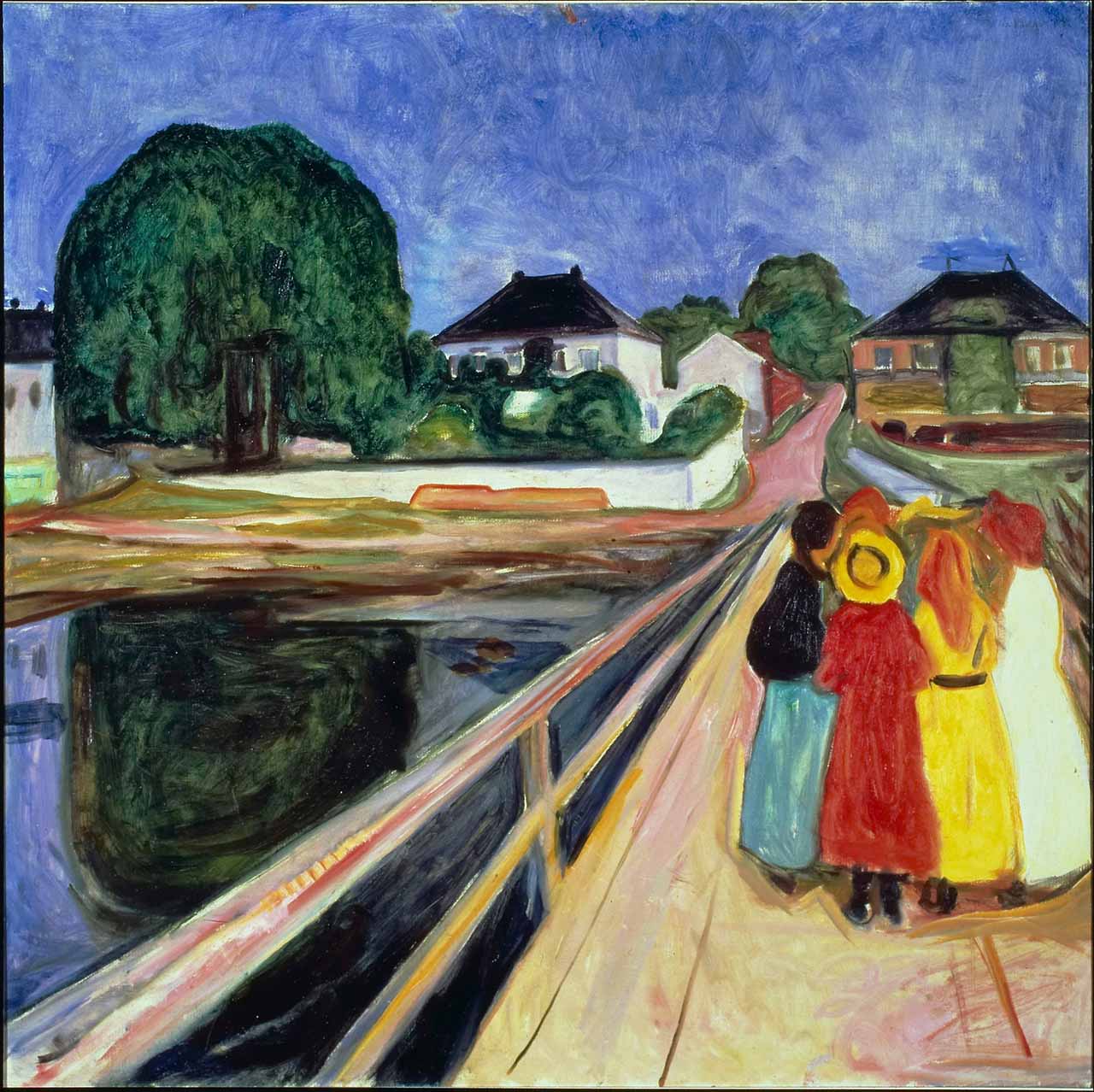 Edvard Munch, The Girls on the Bridge, 1902, oil on canvas. Private collection, © Artist Rights Society (ARS), New York
Edvard Munch, The Girls on the Bridge, 1902, oil on canvas. Private collection, © Artist Rights Society (ARS), New York
Beach
Munch depicted the winding shoreline and beaches of Åsgårdstrand in pure landscapes such as this one.
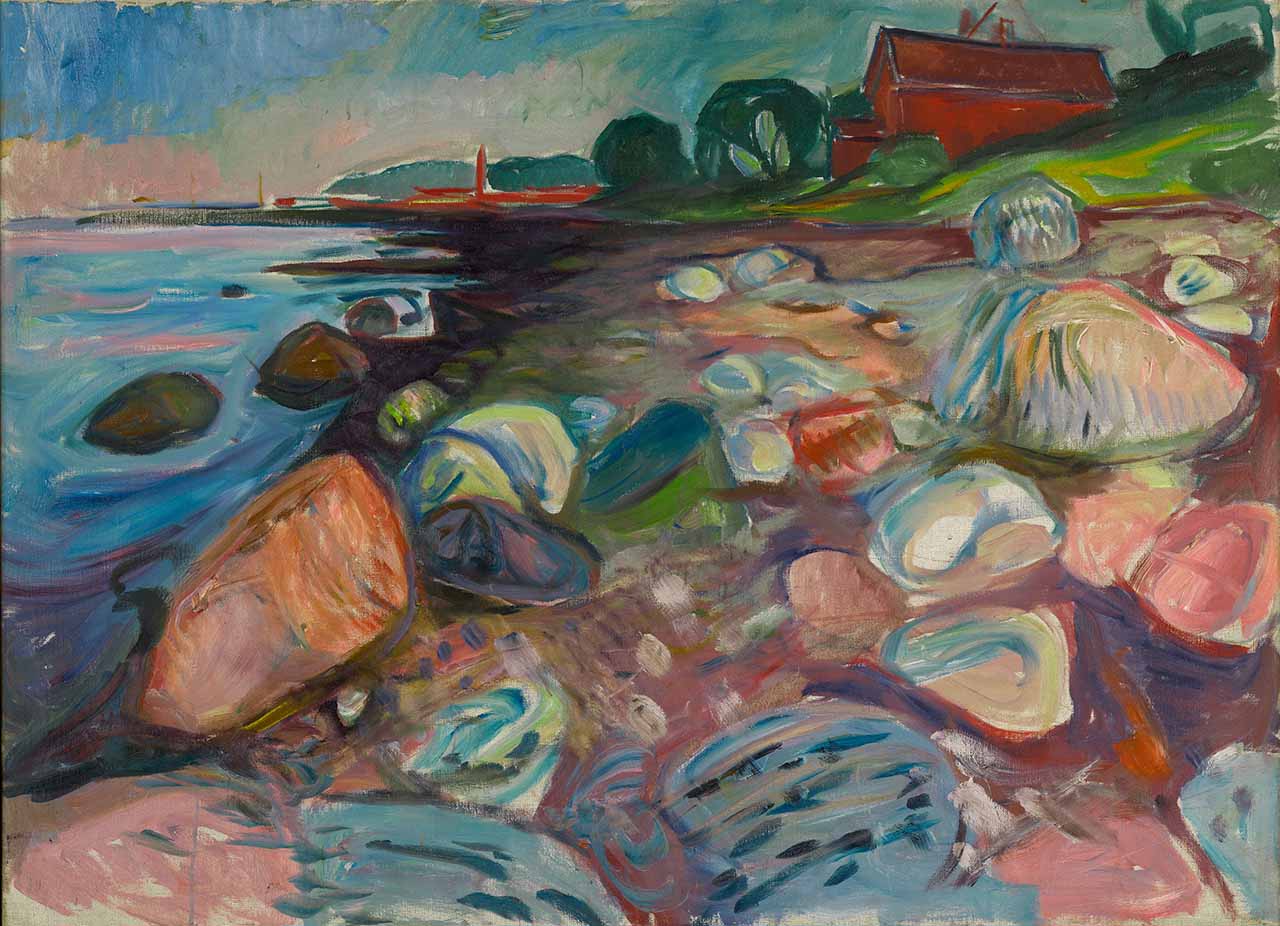 Edvard Munch, Beach, 1904, oil on canvas. Munchmuseet, MM.M.00771, © Artists Rights Society (ARS), New York. Photo: Munchmuseet / Juri Kobayashi
Edvard Munch, Beach, 1904, oil on canvas. Munchmuseet, MM.M.00771, © Artists Rights Society (ARS), New York. Photo: Munchmuseet / Juri Kobayashi
Ekely
Apple Tree in the Garden
This painting features part of the grounds and the Swiss-style villa of Munch’s property at Ekely, which he purchased in 1916 and lived in until his death in 1941.
 Edvard Munch, Apple Tree in the Garden, 1932–42, oil on canvas. Munchmuseet, MM.M.00061, © Artists Rights Society (ARS), New York. Photo: Munchmuseet / Ove Kvavik
Edvard Munch, Apple Tree in the Garden, 1932–42, oil on canvas. Munchmuseet, MM.M.00061, © Artists Rights Society (ARS), New York. Photo: Munchmuseet / Ove Kvavik
Self-Portrait in Front of the House Wall
This portrait shows Munch posing outside near his home at Ekely.
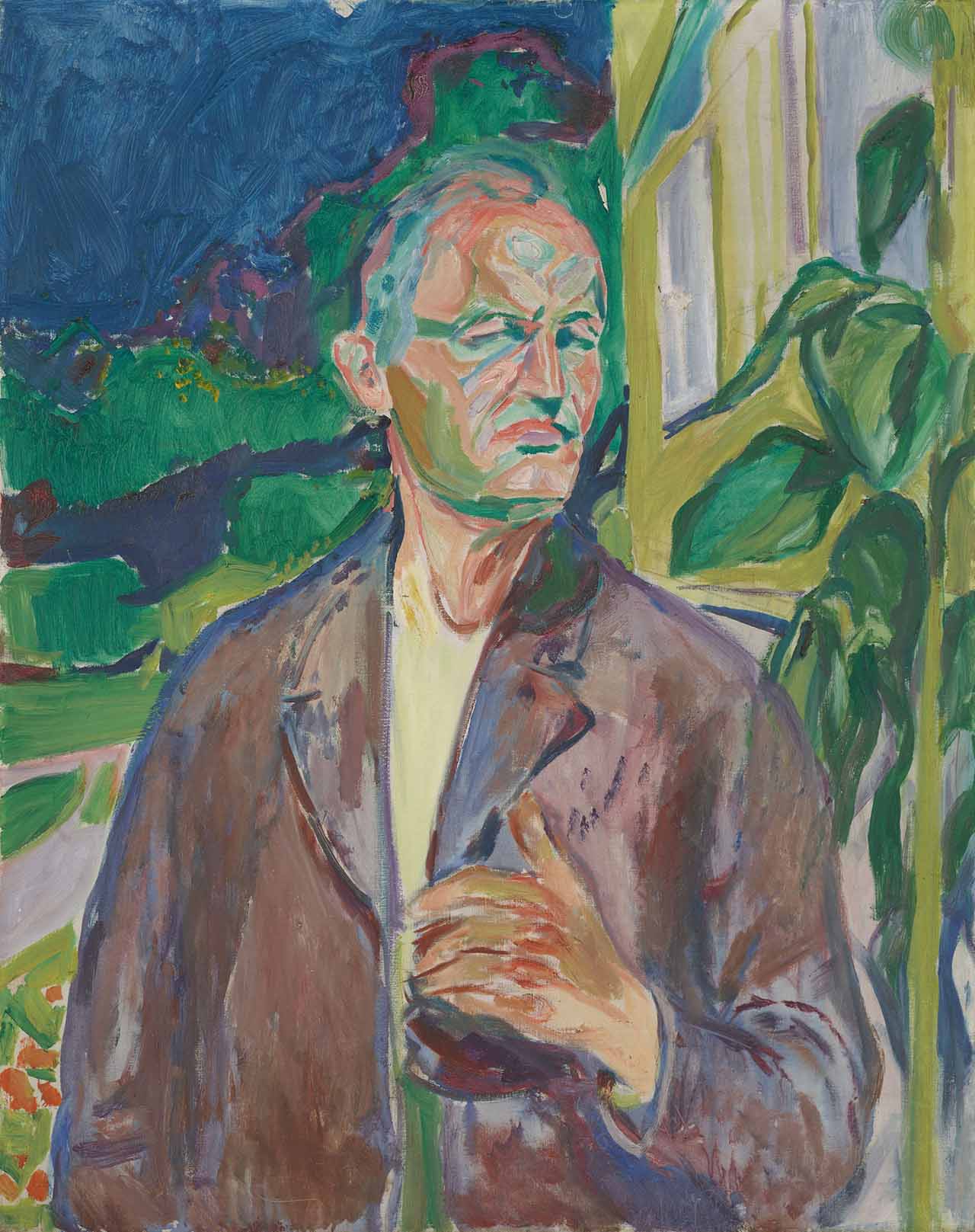 Edvard Munch, Self-Portrait in Front of the House Wall, 1926, oil on canvas. Munchmuseet, MM.M.00318, © Artists Rights Society (ARS), New York. Photo: Munchmuseet / Ove Kvavik
Edvard Munch, Self-Portrait in Front of the House Wall, 1926, oil on canvas. Munchmuseet, MM.M.00318, © Artists Rights Society (ARS), New York. Photo: Munchmuseet / Ove Kvavik
Elm Forest in Spring
Throughout the seasons, the elm forests near Munch’s home at Ekely were a source of inspiration for the artist.
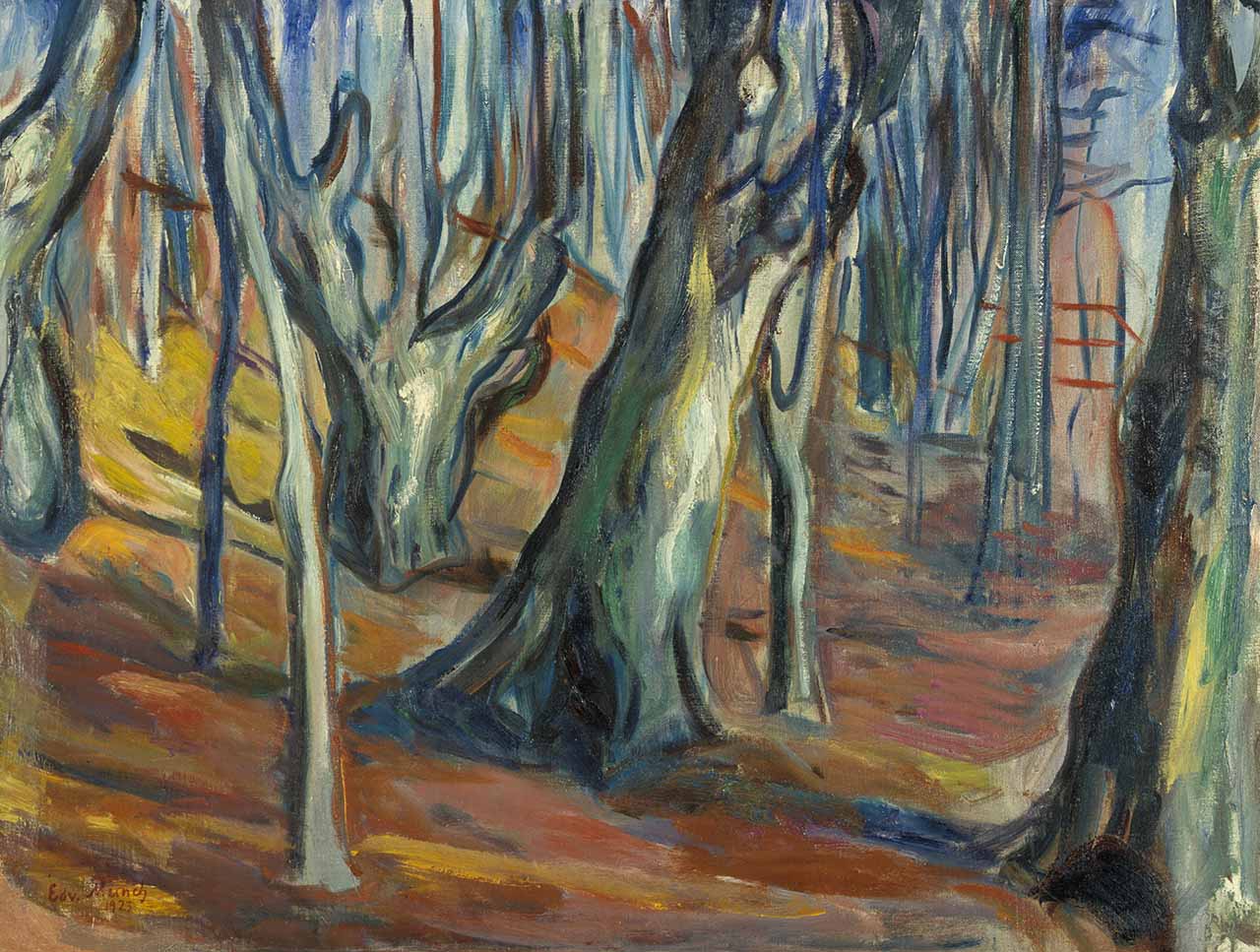 Edvard Munch, Elm Forest in Spring, 1923, oil on canvas. Private collection, © Artists Rights Society (ARS), New York
Edvard Munch, Elm Forest in Spring, 1923, oil on canvas. Private collection, © Artists Rights Society (ARS), New York
Hvitsten
Munch bought the Hvitsten property Nedre Ramme in 1910 as a summer retreat and used the property until his death in 1944, often focusing on the rocky beaches nearby.
Bathing Man
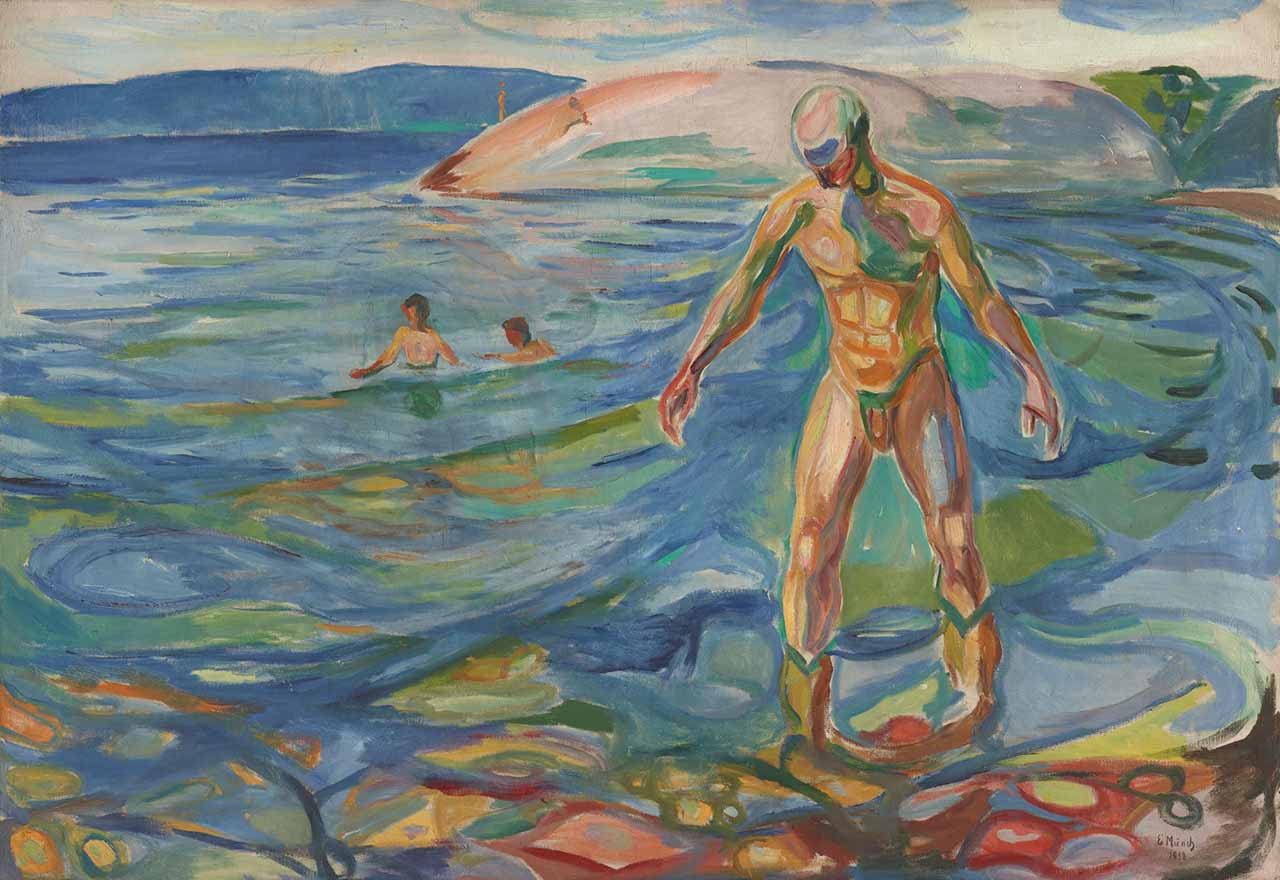 Edvard Munch, Bathing Man, 1918, oil on canvas. Munchmuseet, MM.M.00364, © Artists Rights Society (ARS), New York. Photo: Munchmuseet / Ove Kvavik
Edvard Munch, Bathing Man, 1918, oil on canvas. Munchmuseet, MM.M.00364, © Artists Rights Society (ARS), New York. Photo: Munchmuseet / Ove Kvavik
Sunbathing I
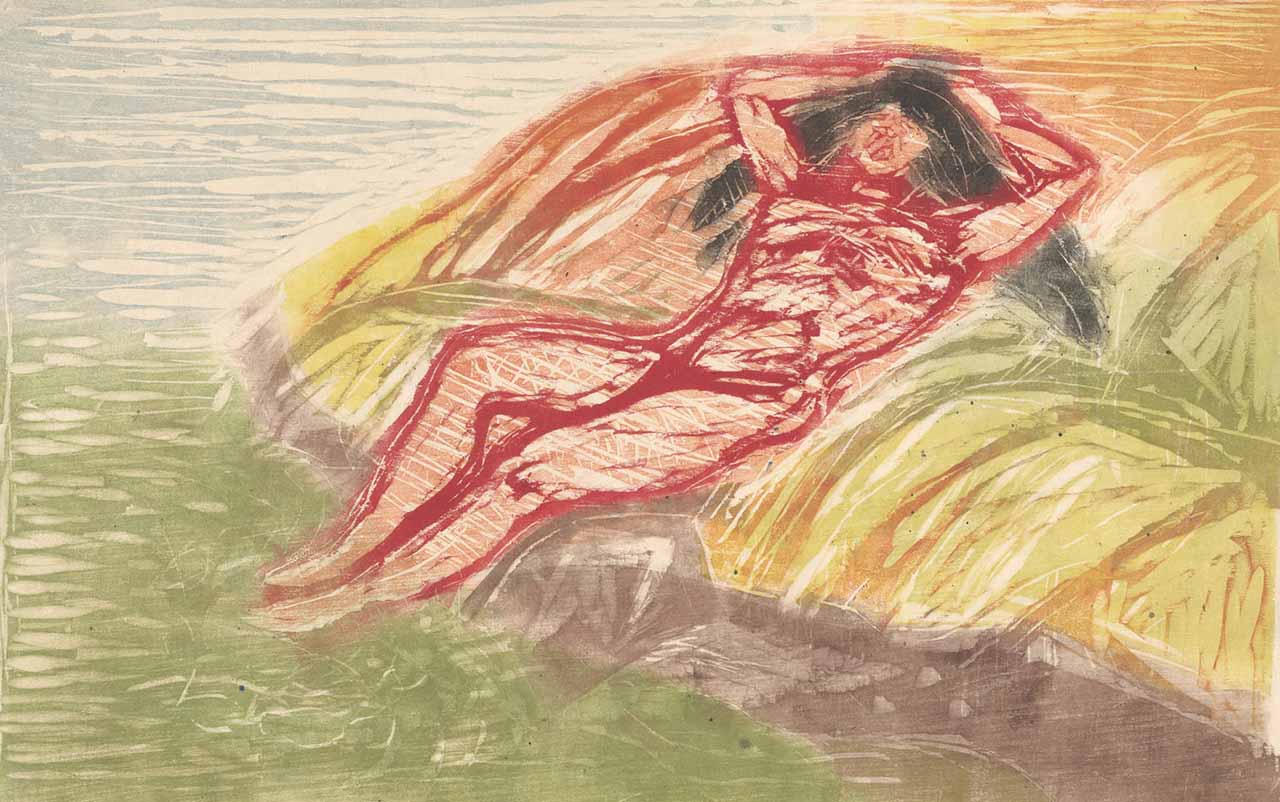 Edvard Munch, Sunbathing I, 1915, color woodcut on paper. Munchmuseet, MM.G.00640-07, © Artists Rights Society (ARS), New York. Photo: Munchmuseet / Rena Li
Edvard Munch, Sunbathing I, 1915, color woodcut on paper. Munchmuseet, MM.G.00640-07, © Artists Rights Society (ARS), New York. Photo: Munchmuseet / Rena Li
Kragerø
Beginning in May 1909, after returning from a clinic in Denmark where he was treated for anxiety and alcoholism, Munch rented a house in Kragerø, Eastern Norway. He developed his famous motif The Sun there and painted the dramatic landscape in winter as well.
The Sun
_small.jpg) Edvard Munch, The Sun, 1912, oil on canvas. Munchmuseet, MM.M.00822, © Artists Rights Society (ARS), New York. Photo: Munchmuseet / Ove Kvavik
Edvard Munch, The Sun, 1912, oil on canvas. Munchmuseet, MM.M.00822, © Artists Rights Society (ARS), New York. Photo: Munchmuseet / Ove Kvavik
Winter in Kragerø
 Edvard Munch, Winter in Kragerø, 1912, oil on canvas. Munchmuseet, MM.M.00392, © Artists Rights Society (ARS), New York. Photo: Munchmuseet / Halvor Bjørngård
Edvard Munch, Winter in Kragerø, 1912, oil on canvas. Munchmuseet, MM.M.00392, © Artists Rights Society (ARS), New York. Photo: Munchmuseet / Halvor Bjørngård
Warnemünde, Germany
Munch sought rest and rejuvenation at the spas of Warnemünde, Germany during 1907-1908. He painted the nude bathers at the beach who soaked up the sun’s rays as part of a health directive.
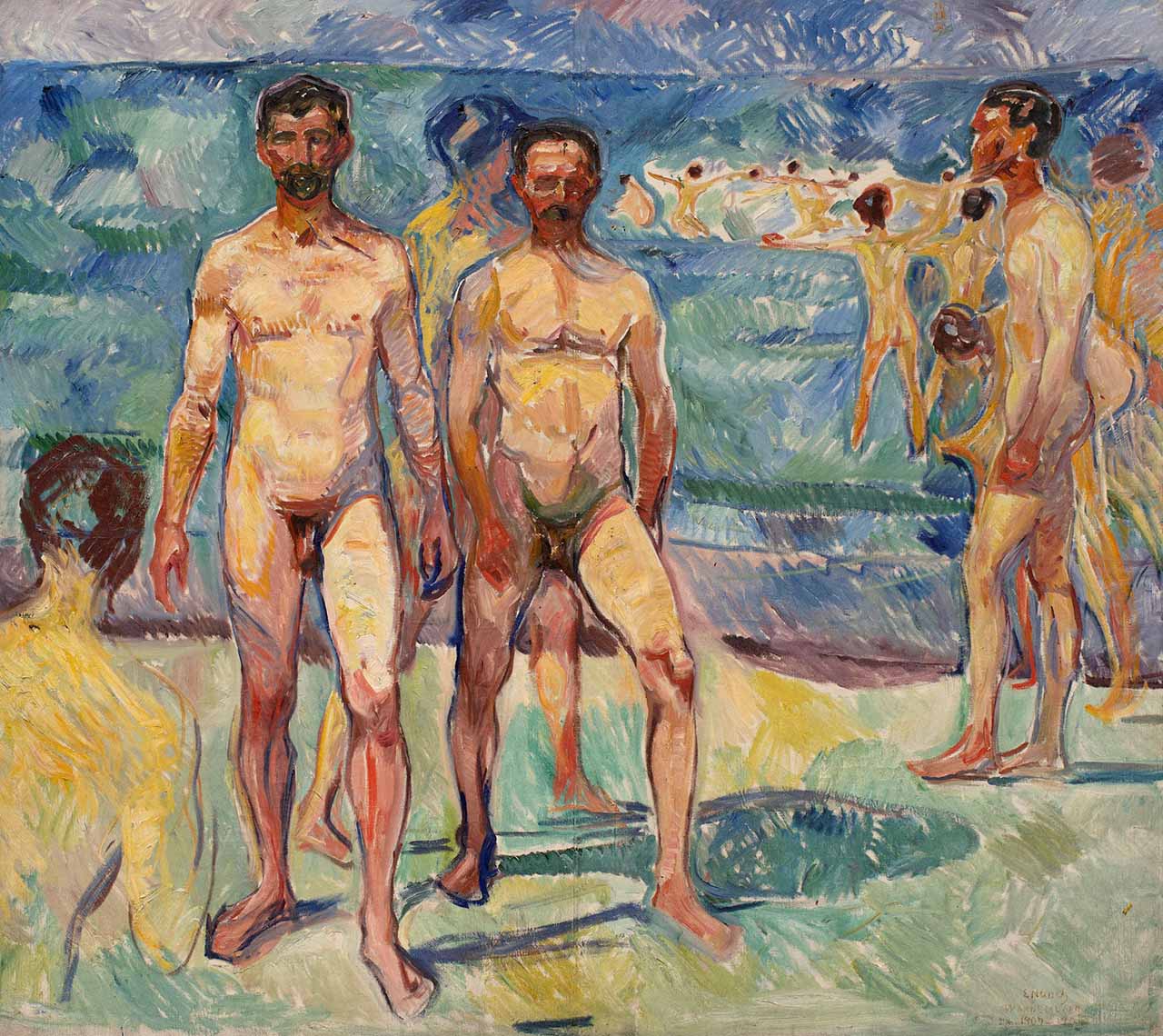 Edvard Munch, Bathing Men, 1907–8, oil on canvas. Finnish National Gallery, Ateneum Art Museum + Collection, purchase by the Antell deputation, A II 908 © Artists Rights Society (ARS), New York. Photo: Finnish National Gallery / Hannu Pakarinen
Edvard Munch, Bathing Men, 1907–8, oil on canvas. Finnish National Gallery, Ateneum Art Museum + Collection, purchase by the Antell deputation, A II 908 © Artists Rights Society (ARS), New York. Photo: Finnish National Gallery / Hannu Pakarinen